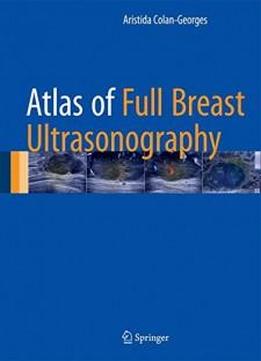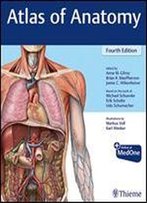
Atlas Of Full Breast Ultrasonography
by Aristida Colan-Georges /
2016 / English / PDF
67 MB Download
This atlas describes and illustrates a novel approach, referred
to as full breast ultrasonography (FBU), that represents a
challenge to conventional breast imaging diagnosis. The coverage
encompasses examination technique, diagnostic criteria, the
imaging features of a wide variety of lesions, and role in
follow-up. FBU involves anatomic ultrasound scanning based on the
ductal echography technique proposed by Michel Teboul,
supplemented by Doppler and real-time sonoelastography. The
approach offers a variety of advantages. Compared with MRI it has
a lower cost, wider availability, better resolution, and improved
correlation with anatomy. Compared with mammography it has the
benefits of absence of irradiation and pain, applicability in all
cases, and better overall accuracy. Furthermore, the standardized
technique of acquisition and interpretation means that it is
suitable as a screening test, unlike classic ultrasonography. FBU
is applicable in ultrasound BI-RADS assessment and is of value in
depicting both benign and malignant conditions. It can be
recommended as a first-line method of diagnosis and for the
follow-up of treated breasts, regardless of the patient’s age,
sex, or physical condition.
This atlas describes and illustrates a novel approach, referred
to as full breast ultrasonography (FBU), that represents a
challenge to conventional breast imaging diagnosis. The coverage
encompasses examination technique, diagnostic criteria, the
imaging features of a wide variety of lesions, and role in
follow-up. FBU involves anatomic ultrasound scanning based on the
ductal echography technique proposed by Michel Teboul,
supplemented by Doppler and real-time sonoelastography. The
approach offers a variety of advantages. Compared with MRI it has
a lower cost, wider availability, better resolution, and improved
correlation with anatomy. Compared with mammography it has the
benefits of absence of irradiation and pain, applicability in all
cases, and better overall accuracy. Furthermore, the standardized
technique of acquisition and interpretation means that it is
suitable as a screening test, unlike classic ultrasonography. FBU
is applicable in ultrasound BI-RADS assessment and is of value in
depicting both benign and malignant conditions. It can be
recommended as a first-line method of diagnosis and for the
follow-up of treated breasts, regardless of the patient’s age,
sex, or physical condition.











